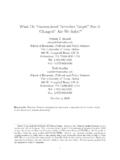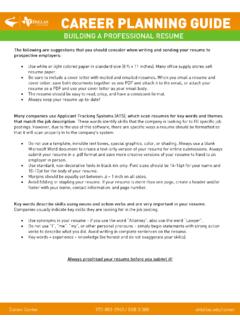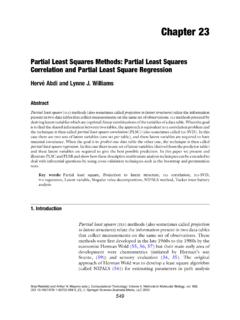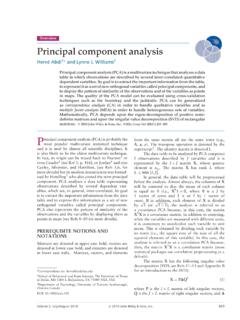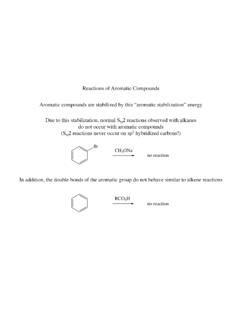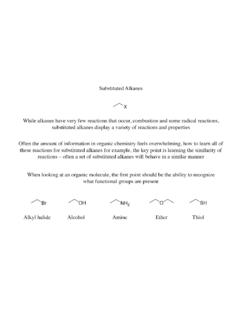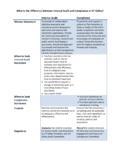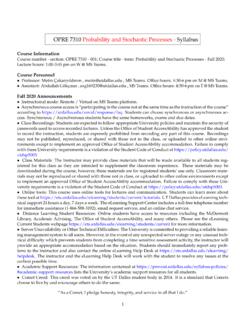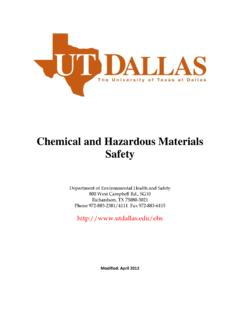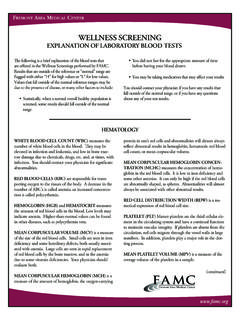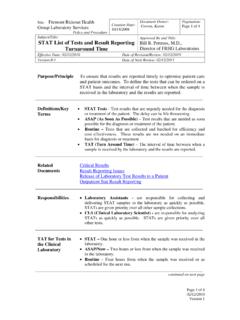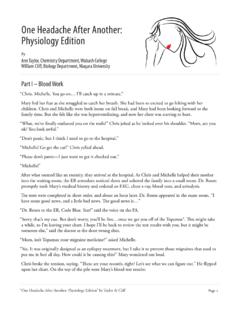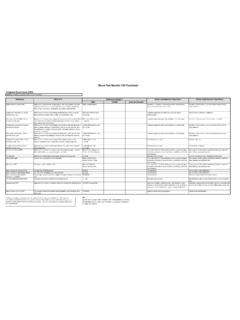Transcription of Needle-Stick Policy
1 Needle-Stick Policy Department of Environmental Health and Safety 800 West Campbell Rd., SG10. Richardson, TX 75080-3021. Phone 972-883-2381/4111 Fax 972-883-6115. Modified: May 2012. In the event of a needlestick: 1. In the event of a needle stick , the employee is to immediately wash the area, scrubbing skin with soap and water. If there is no obvious laceration or major abrasion, the student may choose to wash with a germicidal soap. 2. Report to either the Student Health Center or the Emergency Room for immediate treatment. If necessary, consult with Environmental Health and Safety (EH&S) for further guidance. 3. The employee is to report all pertinent data to the treating physician regarding the exposure and information on source patient.
2 This includes but is not limited to: how exposure occurred, what body fluids were involved, social and medical history, HIV. antibody status, Hepatitis B surface antigen status, and Hepatitis C antibody status of source patient if available, For effective treatment of any potential HIV infection it is imperative to initiate prophylactic treatment within the 2 hours of the incident. 4. The employee should expect to have blood drawn by the hospital for baseline results of Hepatitis B surface antibody, Hepatitis C antibody, HIV antibody and possibly other necessary tests. 5. If there is an index of suspicion regarding the source patient's HIV status, a 48 hour supply of prophylactic medications will be provided to the student free of charge.
3 If a needle stick occurs on a Friday a three day allowance will be provided until follow up care is done on the following Monday at the Student Health Center at University of Texas - Dallas (UTD). 6. When the employee reports to the Student Health Center, a complete evaluation will be made and the student will be able to discuss any questions or concerns that he or she may have. 7. It is strongly recommended that the employee continue taking medication as prescribed until a final determination is made. 8. Some hospitals require that you follow up with them directly. If this is the case then you may have the follow up information forwarded to UTD Student Health Center. It is extremely important that students follow these guidelines and report incidents promptly.
4 This avoids problems that may occur later with the student's health or bills that accidentally go to the student from the hospital where the incident occurred. In the event of an occupational exposure involving UTD students: 1. The student is to report to the Student Health Center for immediate treatment. 2. 2. Do not bill the employee, the Student Health Center Director will confirm the agreement with UTD and all of the nearby hospitals to provide treatment free of charge to all students with a needle stick incident. 3. The employee is to report all pertinent, available information to the treating physician regarding the exposure and source patient. The employee is to report incident immediately, in order that the affiliated hospital staff may initiate prophylactic treatment within the hour for any potential HIV infection, if indicated.
5 4. The treating physician at the affiliated hospital will evaluate risk, utilizing the information available at time of reporting and offer prophylactic treatment based on perceived risk. The employee will either sign a consent or declination form for prophylactic treatment if in fact prophylactic treatment is indicated. A copy of this form should be forwarded to Student Health Center at UTD. 5. If there is an index of suspicion, a 48-hour supply of prophylactic medication will provided to the student free of charge. If the exposure occurs on a Friday, a three day allowance will be provided until follow up care is done the following Monday at the Student Health Center UTD. 6. If the source patient is unknown or the patient's HIV status is unknown at the time of reporting the incident, it will be at the discretion of the treating physician to initiate prophylactic treatment on a case by case basis.
6 7. If the source patient is known and the serostatus of the patient is unknown, then it is necessary for the affiliated hospital to obtain the information and consent needed for laboratory testing and release of information to UTD. This is in order that we may follow up with the student accordingly. 8. Any immediate baseline blood work ( Hepatitis B surface antibody titer, Hepatitis C. antibody baseline, HIV antibody, LFTs, etc.) for the student that may be deemed necessary by the treating physician and should not wait until the employee reports to UTD will be done by the affiliated hospital at no cost to the employee. The employee is then advised to contact Student Health Center at UTD for follow up.
7 9. The employee is to report to Student Health Center at the next working day after the initial evaluation and treatment by the physician at the affiliated hospital where the incident occurred. At the time of this follow up visit, a complete evaluation by UTD. Student Health Center will be made utilizing all the information provided by the affiliated hospital where the incident occurred and a follow up and/or treatment plan will be developed accordingly. 10. Until the employee reports to Student Health Center, it is strongly recommended that the employee take the prophylactic starter dose provided by the affiliated hospital until a final determination is made. 3. Student Evaluation and Treatment after an Occupational Exposure to Human blood or Body Fluids at an Affiliated Hospital Subject: Employee evaluation and treatment after an occupational exposure to human blood or body fluids at an affiliated hospital.
8 Definition: An occupational exposure by an employee is defined as a needle stick , sharp puncture wound or a splash to mucous membranes ( , mouth or eye) with blood or body fluids as a result of an assignment at an affiliated hospital. Procedure: Employees are informed of the occupational exposure procedures through information letter sent out to students as well as during orientation. Initial evaluation and treatment of the exposure is done by the treating physician at the affiliated hospital. There is a procedure letter that is sent to the affiliated hospitals regarding our students. An employee is required to report all occupational exposures to Student Health Center at UTD. When an employee reports to Student Health Center, a post occupational exposure form is to be filled out to obtain accurate information regarding the exposure.
9 The student also is to see the physician. The testing that was completed and the treatment that was begun by the treating physician at the affiliated hospital will determine the follow up that needs to be done by Student Health Center. The employee is to obtain as much information regarding the source patient as possible. Including but not limited to: reason for admission to the hospital, social and medical history, HIV status, Hepatitis B status (HBsAg) and Hepatitis C status (Hep C Antibody). If the affiliated hospital does blood work on the employee and has not sent the results to UTD the student will need to obtain those records so Health Services may follow up accordingly. If the source patient is known to be HIV antibody negative, Hep C negative and HBsAg negative, no further testing is necessary.
10 If the exposure is considered a high risk exposure, the treating physician at the affiliated hospital should have already tested for baseline HIV antibody, baseline liver function tests (LFTs), started the student on chemoprophylaxis (this should be done within 2 hours post-exposure) and given the student a starter dose. The Health Services physician will in turn further counsel the student regarding: -The reasons for using chemoprophylaxis -The risks of occupational HIV infection 4. -The limitations of current knowledge of efficacy and toxicity of drugs being used for prophylactic treatment from an occupational exposure -Possible side effects of taking the medication and recommendations for dealing with those side effects.
